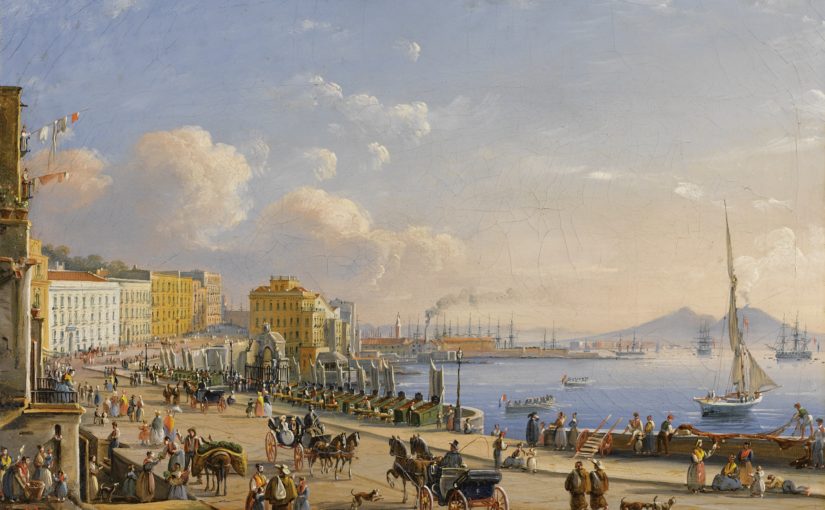The city of Naples lies on the west coast of the Italian peninsula, 120 miles south-east of Rome on a Bay that overlooks the Tyrrhenian sea. The name “Naples” – Napoli in Italian – derives from the Greek term “Neapolis” (Νεάπολις) which means “New City”. Neapolis was founded by Greek colonies who arrived in the IX century B.C. from the islands of Crete and Rhodes – in the Aegean sea. They first settled in the small centre of Cuma and later they spread out along the coast and gave life to Partenope which got renamed Neapolis on 21st December 475. This date has great importance in both pagan religions and in Freemasonry because it is a date marked by the winter solstice [1] . It is the shortest day of the year but one that symbolises the resurrection of nature. With the summer solstice, the winter one represented for the Romans and the Greeks the doors between Heaven and Earth whose keeper was the God Janus.
After the Greeks and the Romans, Neapolis was occupied by a number of foreign and local ethnicities. The French Normans ruled it until 1139 AC and the Germanic dynasty of the Suabi (Svevi) until 1302 when the French made their return with the House of Anjou. The Spanish succeeded the latter first with the Aragonese in 1501 and then with the Spanish wing of the Hapsburgs whose Viceroys presided over southern Italy for over two centuries. In 1734 the Austrians lost Naples and its territories to the Spanish Bourbons who made Naples the Capital of the “Kingdom of the two Sicilies”.
The first Masonic Lodge to emerge in Naples was called “The Perfect Union”. It had been founded in 1728 [2] by Giorgio Olivares (of whom we know little) and 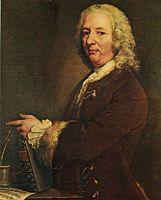 Francesco Xaverio Geminiani [3] – in the portrait – with a patent from the Grand Lodge of England. But I believe that the merit for permanently establishing Freemasonry in Naples must be shared amongst the military and Navy personnel who served under the Viceroys of the Austrian Empire [4] and the many Dutch, French and English merchants and Freemasons who passed, lived and worked in that sunny city built under the threatening shadow of Mount Vesuvius. One of those foreign merchants and Freemasons was Louis Lornage, a Frenchman from Lyon and an importer of fine cloths, who founded his own lodge in 1749.
Francesco Xaverio Geminiani [3] – in the portrait – with a patent from the Grand Lodge of England. But I believe that the merit for permanently establishing Freemasonry in Naples must be shared amongst the military and Navy personnel who served under the Viceroys of the Austrian Empire [4] and the many Dutch, French and English merchants and Freemasons who passed, lived and worked in that sunny city built under the threatening shadow of Mount Vesuvius. One of those foreign merchants and Freemasons was Louis Lornage, a Frenchman from Lyon and an importer of fine cloths, who founded his own lodge in 1749.
In time Freemasonry in Naples saw the conventional and liberal three degrees English Rite lining up in a race for supremacy with the “Scottish Rite”, which had its roots in France and , in contrast to the former, presented undertones of esoterism. But more significantly the Scottish Rite was structured with more than the standard three degrees and it so implied knowledge of higher secrets, which in turn proved a very successful element of attraction for the aristocracy of Naples.
To secure protection in the eventful 18th century, Freemasonry needed the support of important individuals and it became therefore essential that its Lodges recruited selectively, drafting in particularly from the Aristocracy. The Lodge Lornage, characterised by the membership of bourgeois, storekeepers and soldiers, was unfit for the time and it was not destined to survive.
Faced with such shortcoming, the Lodge’s higher-ranked military members led by the Ensign Zelajia (or Zelaia) of the Royal Regiment of Naples, set out to work on a new model, albeit not without consequences.
Louis Lornage, concerned with the spreading of dissension within his Lodge, decided to leave it and found the “New Lornage” in 1750 whilst Zelaia busied himself recruiting from the high military hierarchy and the Court. The first aristocrat to join Zelaia was Gennaro Carafa Prince of Roccella to whom followed many more titled individuals; their influx later influenced the Lodge Zelaia [5] to abandon the English Rite in favour of the Scottish.
RAIMONDO DI SANGRO, PRINCE OF SAN SEVERO
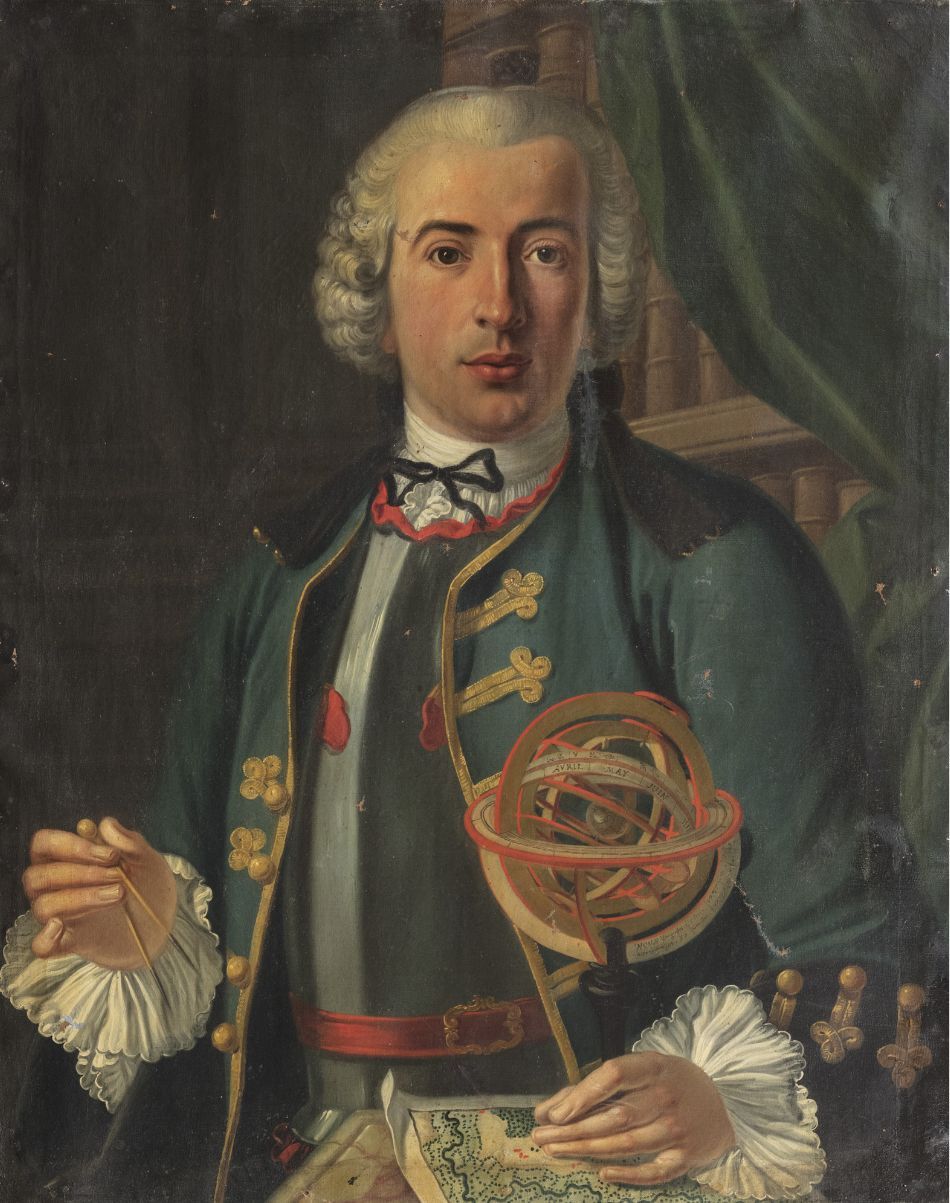 In 1750 the Kingdom of Naples had, at last, its first Grand Master in the person of Raimondo di Sangro Prince of San Severo, who had been introduced into Freemasonry in Paris on 24th May 1737 in the Lodge “Duc de Villeray”. [6]
In 1750 the Kingdom of Naples had, at last, its first Grand Master in the person of Raimondo di Sangro Prince of San Severo, who had been introduced into Freemasonry in Paris on 24th May 1737 in the Lodge “Duc de Villeray”. [6]
The Prince was born on 30 January 1710 [7] at Torremaggiore (Foggia, Apulia, Italy) in a family that descended from the Duke of Burgundy and had a lineage that went as far back as Charlemagne! Raimondo had also a string of other titles: Duke of Torremaggiore [8], Marquis of Santo Stefano di Itri, Count dei Marsi, Baron of Bugnara etc. etc.
As many as four Pontiffs came from the Di Sangro dynasty; one of them – Gregory IX (1227-1241) – was even the founder of the Roman Inquisition. Another of his family’s ancestors – Berardo dei Marsi [9] – had been elevated to sainthood by the Church and through him, the Di Sangros claimed a link with the “Order of the Knights of the Temple”. [10]
On 24th October 1750 the “New Lornage” Lodge, having recognised Prince Raimondo di Sangro as its Grand Master was assimilated into the Zelaia’s Lodge with Louis Lornage being appointed Junior Deacon of the newly established “Lodge Moncada” of Prince Calvaruso [11]. Six months later, another Prince – Gennaro Carafa Prince of Roccella [12] – with whom Raimondo shared membership of the Parisian “Duc de Villeray” and the Neopolitan “The Perfect Union” [13], received a patent to form and lead a Lodge named after him.
Freemasonry was in ascendancy and people begun to suspect that even some members of the Church and Kings might have been in the Craft and embraced the principles of equality, freedom and justice. Just imagine the panic in some of Courts of Europe!
Under Raimondo’s leadership, Freemasonry in Naples had gained a large number of members in a rather short period of time. The success achieved must have made his appointment to the role of Grand Master look a much-enlightened choice, but black clouds soon began to gather over the Order and the Prince himself!
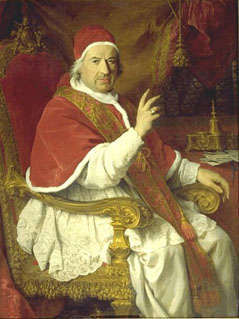 Pope Benedict XIV, realising that he had to act fast to safeguard the Church-State and retain his temporal powers, in May 1751 issued the “Bolla Providas Romanorum Pontificum” which reiterated his predecessor Pope Clemente’s 1738 condemnation that: “joining Freemasonry entailed to automatic excomunication”. [14] This step put an enormous pressure on the Pope’s closer neighbour, Charles VII the King of Naples, whom a few months will decide to align himself with the Rome and outlaw Freemasonry.
Pope Benedict XIV, realising that he had to act fast to safeguard the Church-State and retain his temporal powers, in May 1751 issued the “Bolla Providas Romanorum Pontificum” which reiterated his predecessor Pope Clemente’s 1738 condemnation that: “joining Freemasonry entailed to automatic excomunication”. [14] This step put an enormous pressure on the Pope’s closer neighbour, Charles VII the King of Naples, whom a few months will decide to align himself with the Rome and outlaw Freemasonry.
Through his mother’s lineage with the House of Aragon, Raimondo di Sangro Prince of San Severo was also a Peer of Spain. He was a member of the Chivalric Order of San Gennaro [15] and with the rank of Colonel of the “Capitanata Regiment” Raimondo had valiantly fought to defend the Kingdom of Naples from Austria [16]. But most significantly, perhaps, Raimondo and the Bourbon King Charles VII – the future King of Spain! – had been friends since youth [17] .
Raimondo Di Sangro was, therefore, a very well known and respected figure at Court and was in an excellent position to learn of the intentions of Charles VII towards Freemasonry and so prepare a rational defense of the Order.
But alas he failed badly.
Raimondo’s plan had been to first and foremost admit his role in Freemasonry and then to make the King understand that there were quite a number of virtuous, highly capable and faithful laymen and clerics to whom the Monarch had entrusted of running his Kingdom, who were also Freemasons. Hence no harm could ever be made by the Order to either the Monarchy nor to the Church.
But the expedient rebounded and Raimondo found himself helplessly pressed by the King and his officials to reveal the names of all the enlisted Brethren in Naples. The Grand Master of the Order had capitulated!
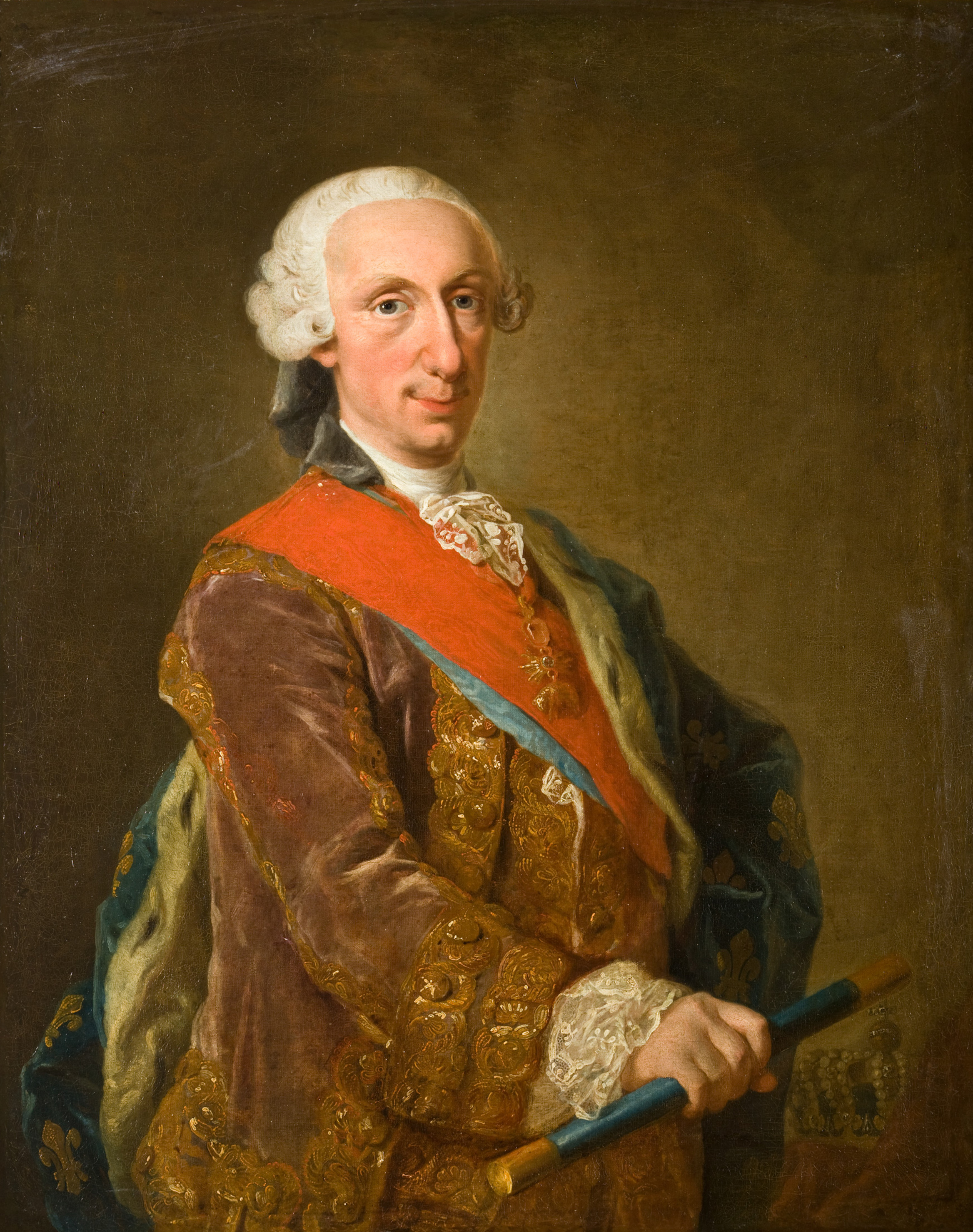 The shrewdly arranged date for Raimondo’s audience with the King [18] – which fell right into the Nativity festivities period and had no doubt been chosen to put to the test the compassion of Charles VII – did nothing to dissuade the Monarch. Although much loved by his people and considered somehow to be an enlightened character, Charles VII – shown here in the portrait – outlawed Freemasonry in Naples and the rest of his Kingdom on 10th July 1751.
The shrewdly arranged date for Raimondo’s audience with the King [18] – which fell right into the Nativity festivities period and had no doubt been chosen to put to the test the compassion of Charles VII – did nothing to dissuade the Monarch. Although much loved by his people and considered somehow to be an enlightened character, Charles VII – shown here in the portrait – outlawed Freemasonry in Naples and the rest of his Kingdom on 10th July 1751.
Fortunately for the Freemasons whose names Raimondo had disclosed, things did not turn out too badly as the King’s punishment consisted simply in a public admonishment. Faced with the facts, Charles VII must have accepted that, had he indiscriminately ordered incarceration or worse for those Freemasons, he would indeed have lost a large part of his court!
Following the King’s edict, Raimondo di Sangro publicly distanced himself from the Order and to avoid excommunication, he wrote to the Pope on 1st August 1751 asking for forgiveness, which was granted. From then on the Prince dedicated the rest of his life only to his two great passions: technological research and esoterical studies.
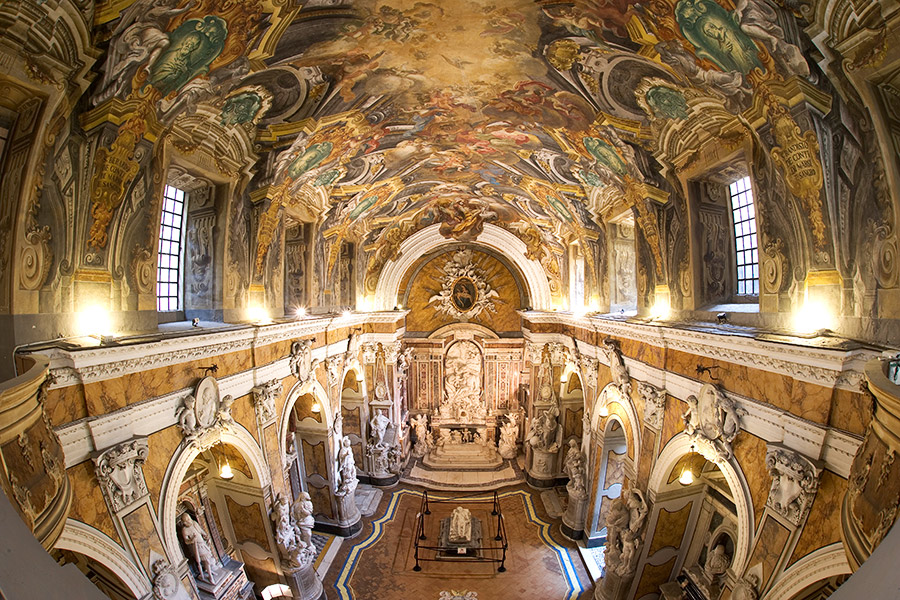
His famous Sansevero Chapel in Naples, where he is thought to have been buried, is a testimony to his genius, to the art of Alchemy and to Masonic symbolism.
Read about his life in https://tetraktys.co.uk/theprinceofsansevero/
This sequence of events is the official version passed down through the centuries. There is however a more intriguing theory [19] which suggests that Raimondo ‘s betrayal of the Neapolitan Brethren had been an expedient to shield the members of his most inner private Lodge called “Rosa dell’Ordine Magno”, an anagram of his own name. It was a secret super Lodge comprising of nearly three hundred individuals from the most Aristocratic families of Europe. Their duty was to protect the secret of the true origin of the Carolingian dynasty – from which Raimondo himself descended – believed to be behind the myth of the “Sacred Graal”, the secret of the Rosecroix and of the Templars. It was those Brothers that Raimondo wanted to protect at all costs by instead sending to the lions the Neapolitan Freemasons.
On 24th July 1751, the Grand Lodge of the Kingdom of Naples was abolished by Royal Decree and Freemasonry fell into a long sleep.
(CONTINUES)
WB Leonardo Monno Anglisani
This work is licensed under a Creative Commons Attribution 4.0 International Licence. The author forbids any reproduction or publication of this article, in full or in part, without his explicit authorisation.
[1] A solstice is an astronomical event that happens twice each year when the Sun reaches its highest position in the sky as seen from the North or South Pole. The word solstice is derived from the Latin sol (sun) and sistere (to stand still), because at the solstices, the Sun stands still in declination
[2] According to the eminent esoterist Ciro Formisano alias Giuliano Kremmerz (Portici, Naples 8.4.1961-Neausolei, France 7.5.1930)
[3] Francesco Xaverio (or Saverio) Geminiani (Lucca, Italy,1687- Dublin, Ireland, Sept 17, 1762). Italian composer, violinist and theorist.
[4] From 1707 to 1734
[5] Originally “Lornage Lodge”
[6] “Gli esordi della massoneria napoletana” by Giuliano Kremmerz
[7] Died in Naples on 22.3.1771
[8] San Severo and Torremaggiore are two small towns in the Province of Foggia in Apulia , a south-eastern Region of Italy
[9] Berardo dei Conti dei Marsi (Colli di Montebove, 1079 – Marsia, 3 novembre 1130)
[10] “La Massoneria nel Regno di Napoli dal 1750 al 1789” published by Nicola Ferraro (source : htpp://esoterismografico.blogspot.co.uk/2010_03_01_archive.html)
[11] It took the name from Guglielmo Moncada Prince Calvaruso but it was also known as “Loggia Calvaruso”
[12] A descendent of Gennaro I Carafa Cantelmo Stuart, Prince of Roccella (Naples 31.10.1667-1.9.1715)
[13] “Gli esordi della massoneria napoletana” by Giuliano Kremmerz
[14] wikipedia.org/wiki/Papal_ban_of_Freemasonry
[15] An Order that Charles VII had founded and which was reserved to the Aristocracy
[16] At the head of his regiment , Raimondodi Sangro had snatched back from the Austrian troops the town of Velletri in 1744 , in the war between the Habsburgs and the Bourbons.
[17] Charles (Bourbon)VII , future King of Spain as Charles III who at the age of 17 on 10/5/1734 had taken possession of the Kingdom of Naples from his father Philip V , King of Spain and Viceroy under the Austrian Emperor Charles VI of the Kingdom of Naples
[18] It was held on 26th December 1750
[19] “Abstracta” year I , number 6, 1986 published by Stile Regina Editrice
- Influencia de la Masonería en Chile - April 29, 2024
- Pomegranate in Freemasonry – its significance - March 11, 2024
- Inns and Innkeepers’ incidence in Freemasonry expansion - February 28, 2024

